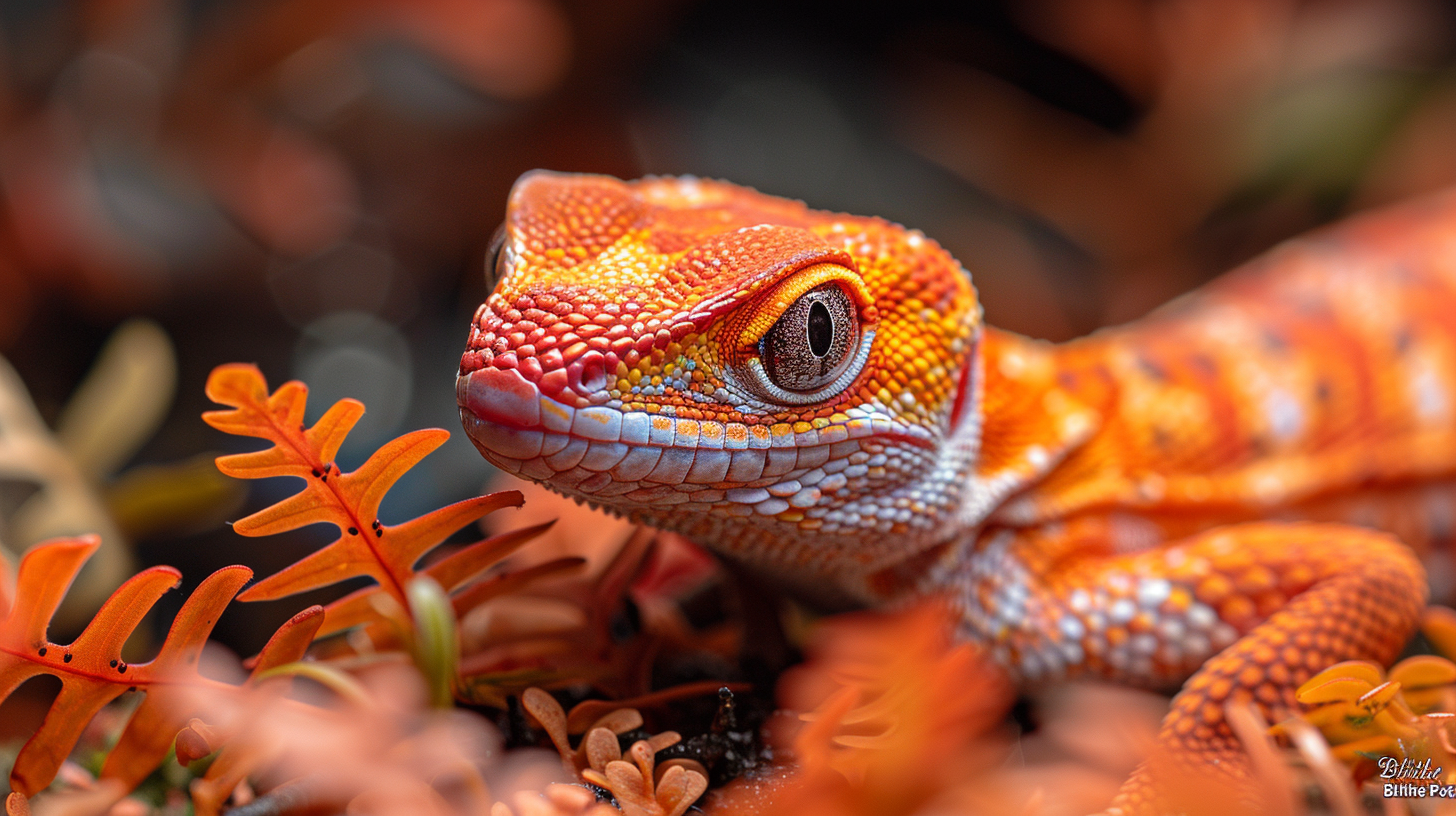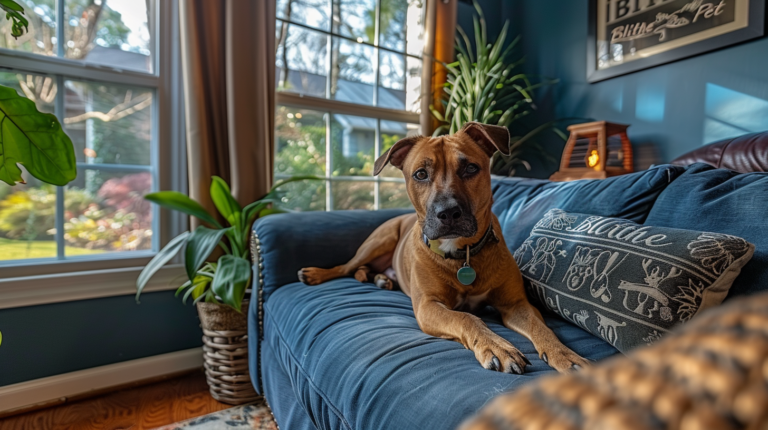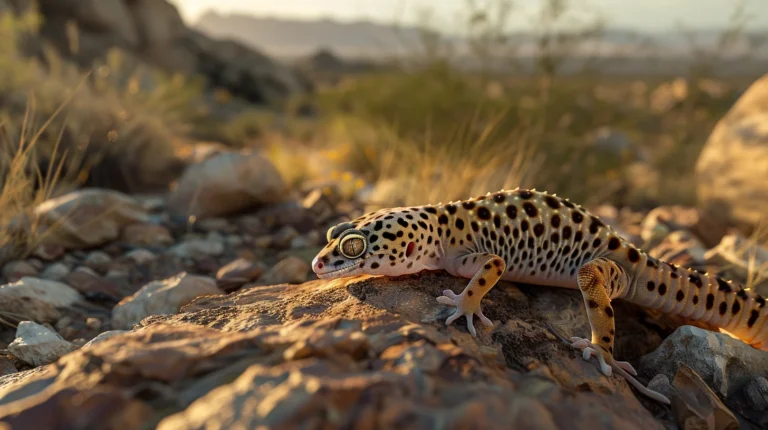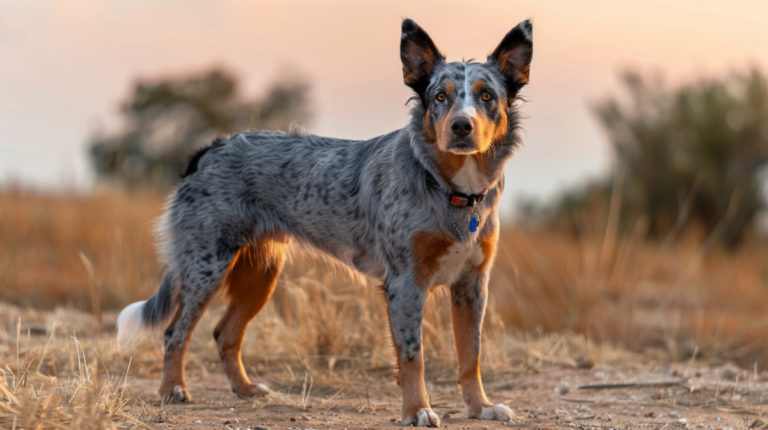Discover 6 stunning Red Ackie Monitor color variations! Expert guide to morphs, care tips, breeding insights, and choosing the perfect reptile companion for your collection.
Table of Contents
Did you know that Red Ackie Monitors can display over six distinct color variations, each more breathtaking than the last? These remarkable Australian reptiles, scientifically known as Varanus acanthurus, have captivated herpetologists and reptile enthusiasts worldwide with their vibrant patterns and intelligent personalities. The Red Ackie Monitor represents one of nature’s most stunning examples of adaptive coloration, showcasing everything from deep crimson bands to golden-yellow highlights that seem to shimmer under proper lighting.
Whether you’re a seasoned reptile keeper or considering your first monitor lizard, understanding these color variations is crucial for making informed decisions about breeding, housing, and appreciating these magnificent creatures. From the classic red-banded morphs that give this species its name to the rare leucistic specimens that command premium prices, each variation tells a unique story of genetics, geography, and careful selective breeding.
During my years working with reptile rescue organizations across Texas, I’ve had the privilege of caring for dozens of Red Ackie Monitors, each displaying unique colorations that never cease to amaze visitors and fellow herpetologists alike. The diversity within this single species is truly remarkable and continues to drive conservation efforts across their native Australian habitat.
Understanding Red Ackie Monitor Genetics and Color Development
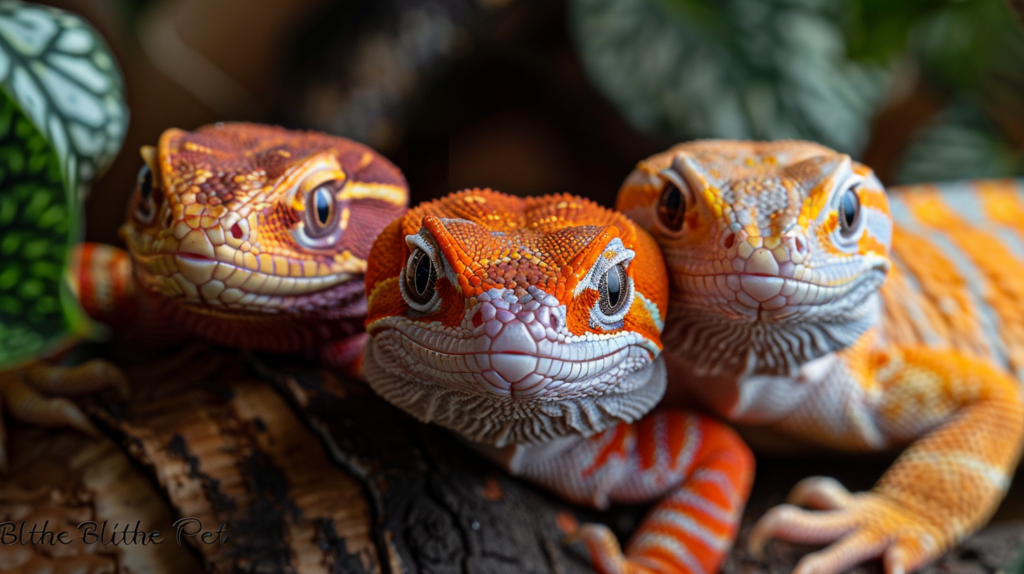
The stunning color variations found in Red Ackie Monitors result from complex genetic interactions that influence melanin production, scale structure, and pigment distribution. These fascinating reptiles develop their distinctive patterns through both hereditary factors and environmental influences during their early development stages.
Red Ackie Monitor coloration is primarily controlled by multiple genes working in combination, including those responsible for red pigmentation (erythrism), pattern formation, and base coloration intensity. Understanding these genetic foundations helps breeders predict offspring characteristics and assists potential owners in selecting specimens that will develop into their desired color variations.
Environmental factors during incubation and early growth also play significant roles in final coloration intensity. Temperature fluctuations, humidity levels, and even substrate type can influence how dramatically certain color genes express themselves. This explains why siblings from the same clutch may display notably different intensities of the same basic color pattern.
| Color Variation | Genetic Basis | Frequency | Market Value | Care Difficulty |
|---|---|---|---|---|
| Classic Red-Banded | Dominant red gene | Common | $200-400 | Beginner |
| High-Red Morph | Enhanced red expression | Uncommon | $400-700 | Intermediate |
| Yellow-Banded | Recessive yellow gene | Rare | $600-1000 | Intermediate |
| Leucistic | Partial albinism | Very Rare | $1200-2000 | Advanced |
| Melanistic | Increased melanin | Uncommon | $500-800 | Intermediate |
| Patternless | Pattern suppression | Rare | $800-1500 | Intermediate |
The Six Stunning Red Ackie Monitor Color Variations
1. Classic Red-Banded Ackie Monitor
The Classic Red-Banded Red Ackie Monitor represents the foundation morph that gives this species its common name. These specimens display bold, well-defined red bands alternating with darker base colors, creating a striking pattern that immediately catches the eye. The red coloration typically ranges from bright orange-red to deep crimson, depending on the individual’s genetic background and environmental factors.
Classic Red-Banded specimens are characterized by consistent banding patterns that extend from the head to the tail tip. The base color usually appears as dark brown or black, providing excellent contrast against the vibrant red bands. These monitors maintain their coloration intensity throughout their lives, with many specimens becoming even more vibrant as they reach sexual maturity.
For beginners entering the Red Ackie Monitor hobby, Classic Red-Banded specimens offer the perfect combination of stunning appearance and genetic stability. Their widespread availability and reasonable pricing make them accessible to most enthusiasts while still providing the visual impact that makes these reptiles so desirable.
2. High-Red Morph Ackie Monitor
High-Red Morph Red Ackie Monitors take the classic pattern to extraordinary levels through selective breeding for enhanced red pigmentation. These specimens display significantly more intense red coloration that often extends beyond traditional banding patterns, creating almost solid red areas across their bodies.
The genetic mechanisms behind High-Red morphs involve multiple genes working together to amplify red pigment production. Breeders have spent years developing these lines, carefully selecting breeding pairs that consistently produce offspring with exceptional red intensity. The result is specimens that appear almost luminescent under proper lighting conditions.
High-Red Morphs require slightly more experienced care due to their selective breeding background. While not necessarily more delicate than wild-type specimens, their premium genetics deserve proper husbandry to maintain their stunning appearance throughout their 15-20 year lifespan.
3. Yellow-Banded Ackie Monitor
Yellow-Banded Red Ackie Monitors represent one of the most striking departures from the typical red coloration, showcasing brilliant yellow bands instead of the characteristic red. This recessive trait produces specimens with golden-yellow to bright canary-yellow banding patterns that create an entirely different aesthetic appeal.
The genetic basis for yellow coloration involves the suppression of red pigment production while maintaining and enhancing yellow pigment expression. This creates monitors that display the classic banding pattern in stunning yellow hues, often with subtle orange undertones that add depth to their appearance.
Yellow-Banded specimens command higher prices due to their rarity and the difficulty of producing them consistently. Breeding programs for these morphs require careful genetic planning, as both parents must carry the recessive yellow gene to produce yellow-banded offspring reliably.
4. Leucistic Ackie Monitor
Leucistic Red Ackie Monitors represent the pinnacle of color variation within this species, displaying reduced pigmentation that creates pale, almost white specimens with subtle color hints. True leucistic specimens retain their eye coloration while showing dramatically reduced body pigmentation, creating an ethereal appearance unlike any other reptile.
The leucistic trait results from partial albinism affecting melanin production while leaving other pigment systems partially functional. This creates specimens with pale pink, cream, or very light yellow base colors with faint pattern remnants visible under proper lighting conditions.
These extraordinary specimens require advanced care due to their reduced pigmentation making them more sensitive to UV radiation and temperature fluctuations. Leucistic Red Ackie Monitors are typically housed with specialized lighting and heating systems to accommodate their unique physiological needs.
5. Melanistic Ackie Monitor
Melanistic Red Ackie Monitors display the opposite extreme from leucistic specimens, showing increased melanin production that creates specimens with exceptionally dark, almost black base colors. The red banding patterns remain visible but appear as deep burgundy or dark red against the nearly black background.
The genetic mechanisms producing melanism involve enhanced melanin production throughout the animal’s integumentary system. This creates specimens with incredibly rich, dark coloration that provides striking contrast when red patterns are present. Some melanistic specimens display an almost metallic sheen under appropriate lighting.
Melanistic morphs have gained popularity among collectors seeking dramatic, sophisticated-looking specimens. Their dark coloration makes them particularly photogenic and creates stunning displays in appropriately designed enclosures with proper lighting systems.
6. Patternless Ackie Monitor
Patternless Red Ackie Monitors lack the characteristic banding patterns entirely, instead displaying solid or nearly solid base coloration throughout their bodies. These specimens may retain slight color variations or faint pattern hints, but the dramatic banding typical of the species is largely absent.
The patternless trait involves genetic mechanisms that suppress pattern formation during development while maintaining base color production. This creates specimens with clean, unbroken color fields that emphasize the animal’s natural body structure and proportions.
Breeding patternless specimens requires understanding the complex genetics involved in pattern suppression. Many patternless animals carry hidden pattern genes that may resurface in subsequent generations, making breeding programs challenging but rewarding for dedicated herpetologists.
For more expert pet care tips and product recommendations, visit BlithePet.com — your trusted source for pet wellness.
Housing Requirements for Different Color Variations
While all Red Ackie Monitor color variations share basic housing requirements, certain morphs benefit from specialized care considerations. Understanding these nuances ensures optimal health and color development for your specific specimen.
Basic Housing Requirements:
- Minimum enclosure size: 4′ x 2′ x 2′ for adults
- Temperature gradient: 80-85°F cool side, 95-100°F basking spot
- Humidity levels: 40-60% with humid hide available
- Substrate depth: 6-8 inches for burrowing behavior
- UVB lighting: 10-12% UVB fluorescent or equivalent LED
| Housing Aspect | Classic/High-Red | Yellow-Banded | Leucistic | Melanistic | Patternless |
|---|---|---|---|---|---|
| UVB Requirements | Standard 10-12% | Standard 10-12% | Reduced 5-7% | Standard 10-12% | Standard 10-12% |
| Basking Temperature | 95-100°F | 95-100°F | 90-95°F | 95-100°F | 95-100°F |
| Substrate Preference | Mixed sand/soil | Mixed sand/soil | Fine sand | Dark substrate | Any natural |
| Lighting Duration | 12-14 hours | 12-14 hours | 10-12 hours | 12-14 hours | 12-14 hours |
| Hide Requirements | Standard | Standard | Multiple options | Standard | Standard |
Leucistic specimens require the most specialized care due to their light-sensitive nature. Reduced UVB exposure prevents potential skin damage while maintaining adequate vitamin D3 synthesis. Multiple hide options allow these sensitive animals to regulate their light exposure throughout the day.
Melanistic specimens often prefer darker substrate materials that complement their natural coloration. While not strictly necessary, this environmental preference can reduce stress and encourage natural behaviors in captivity.
Breeding Red Ackie Monitor Color Variations
Successful breeding of specific Red Ackie Monitor color variations requires thorough understanding of reptile genetics, proper conditioning protocols, and patience for long-term breeding projects. Each color variation presents unique challenges and opportunities for dedicated breeders.
Pre-Breeding Considerations: Before attempting to breed any Red Ackie Monitor color variation, ensure both potential parents are healthy, sexually mature (typically 18-24 months), and properly conditioned through appropriate diet and environmental cycling.
Genetic Planning: Understanding dominant, recessive, and co-dominant inheritance patterns is crucial for predicting offspring outcomes. Classic red-banded traits are typically dominant, while yellow-banded and leucistic traits follow recessive inheritance patterns.
Breeding Season Preparation: Red Ackie Monitors benefit from seasonal temperature and photoperiod cycling to trigger breeding behaviors. Gradually reduce temperatures and lighting duration over 6-8 weeks to simulate natural seasonal changes.
Egg Incubation Protocols: Successful incubation requires consistent temperature (84-86°F) and humidity (80-90%) maintained throughout the 6-8 month incubation period. Temperature fluctuations during critical development periods can affect final coloration intensity.
Common Health Issues Across Color Variations
While color variations don’t typically affect overall health, certain morphs may have increased susceptibility to specific conditions requiring preventive care and monitoring.
Universal Health Concerns:
- Respiratory infections from inadequate temperature gradients
- Parasitic infestations from poor quarantine protocols
- Metabolic bone disease from insufficient UVB or calcium
- Impaction from inappropriate substrate choices
- Dehydration from insufficient humidity levels
Variation-Specific Considerations: Leucistic specimens may experience increased skin sensitivity requiring modified lighting protocols. High-red morphs from intensive breeding programs may have slightly reduced genetic diversity, making proper quarantine and health monitoring especially important.
Preventive Care Strategies: Regular veterinary check-ups, appropriate quarantine periods for new acquisitions, and maintaining detailed health records help ensure long-term success with any Red Ackie Monitor color variation.
Expert Tips for Red Ackie Monitor Color Variation Care
Tip 1: Temperature Gradient Optimization
Maintain precise temperature gradients using multiple heat sources and quality thermostats. Digital thermometers with probes provide accurate readings essential for proper thermoregulation across all color variations.
Tip 2: UVB Rotation Schedule
Replace UVB bulbs every 6-12 months regardless of apparent functionality. UV output degrades significantly over time, potentially affecting calcium metabolism and overall health.
Tip 3: Substrate Selection Strategy
Choose substrates that allow natural burrowing behaviors while maintaining appropriate humidity levels. Avoid cedar or pine shavings which can cause respiratory irritation.
Tip 4: Feeding Protocol Consistency
Establish regular feeding schedules with appropriately sized prey items. Adult Red Ackie Monitors typically eat every 3-4 days, while juveniles require daily feeding for proper growth.
Tip 5: Environmental Enrichment Implementation
Provide climbing branches, hiding spots, and textured surfaces to encourage natural behaviors. Environmental complexity reduces stress and promotes physical fitness.
Tip 6: Quarantine Procedures
Maintain strict 60-90 day quarantine periods for all new acquisitions. This prevents disease transmission and allows observation of individual behavior patterns.
Tip 7: Record Keeping Systems
Document feeding schedules, shedding cycles, breeding attempts, and health observations. Detailed records help identify patterns and potential issues early.
Tip 8: Humidity Management Techniques
Use digital hygrometers to monitor humidity levels accurately. Provide humid hides during shedding periods to prevent stuck shed complications.
Tip 9: Lighting Timer Implementation
Consistent photoperiods using quality timers help maintain natural circadian rhythms essential for proper behavior and breeding responses.
Tip 10: Emergency Preparedness Planning
Maintain emergency heating and power backup systems. Identify exotic veterinarians in your area before emergencies occur.
Warning Signs to Watch For
Recognizing early warning signs of health problems ensures prompt intervention and better outcomes for Red Ackie Monitors of any color variation.
Immediate Veterinary Attention Required:
- Labored breathing or open-mouth breathing
- Lethargy combined with loss of appetite
- Swollen joints or limbs
- Discharge from eyes, nose, or mouth
- Inability to defecate or abnormal fecal consistency
- Severe skin lesions or unusual discoloration
Monitor Closely:
- Changes in appetite patterns
- Altered basking behavior
- Unusual hiding or activity levels
- Difficulty shedding completely
- Changes in drinking habits
Environmental Warning Signs:
- Consistent temperature or humidity fluctuations
- Mold growth in enclosures
- Substrate becoming waterlogged
- Inadequate ventilation causing stagnant air
When to Consult a Veterinarian
Exotic veterinarians specializing in reptile medicine provide essential care for Red Ackie Monitors experiencing health issues beyond basic husbandry corrections.
Annual Health Examinations: Schedule yearly check-ups with qualified exotic veterinarians familiar with monitor lizard anatomy and physiology. These visits help establish baseline health parameters and identify potential issues before they become serious.
Emergency Situations: Seek immediate veterinary care for respiratory distress, trauma, severe dehydration, or any condition where the animal appears to be suffering. Monitor lizards can decline rapidly when seriously ill.
Breeding Consultations: Consult experienced reptile veterinarians when planning breeding projects, especially with rare color variations where genetic health considerations are paramount.
Common Mistakes to Avoid
Mistake 1: Inadequate Quarantine Procedures
Many new keepers rush to introduce new Red Ackie Monitors to their collections without proper quarantine periods, risking disease transmission to established animals.
Mistake 2: Inappropriate Substrate Choices
Using substrates that don’t allow natural burrowing behaviors or those that pose impaction risks can seriously impact monitor health and natural behaviors.
Mistake 3: Temperature Extremes
Failing to provide proper temperature gradients or allowing extreme fluctuations can lead to respiratory infections, digestive issues, and behavioral problems.
Mistake 4: Overfeeding Protocols
Many enthusiasts overfeed their Red Ackie Monitors, leading to obesity and related health complications that can significantly reduce lifespan.
Mistake 5: Inadequate UVB Provision
Insufficient or outdated UVB lighting leads to metabolic bone disease, one of the most common preventable health issues in captive reptiles.
Myth-Busting: Red Ackie Monitor Facts vs Fiction
Myth 1: “Red Ackie Monitors are aggressive and difficult to handle”
Reality: Properly socialized Red Ackie Monitors can become quite docile with consistent, gentle handling. Their intelligence allows them to recognize and respond positively to their keepers.
Myth 2: “Color variations require completely different care”
Reality: While some morphs have specific considerations, all Red Ackie Monitor color variations share the same basic care requirements. Environmental modifications are usually minor adjustments rather than complete overhauls.
Myth 3: “Rare color morphs are automatically healthier or superior”
Reality: Color variation doesn’t indicate health status or quality. Some rare morphs may actually have reduced genetic diversity from intensive breeding programs, requiring more careful management.
Legal Considerations and Ethical Breeding
Understanding legal requirements for keeping and breeding Red Ackie Monitors ensures compliance with local, state, and federal regulations. Many jurisdictions require permits for monitor lizard ownership or breeding activities.
Research Local Laws: Before acquiring any Red Ackie Monitor, thoroughly research local exotic pet ownership laws. Requirements vary significantly between locations and may include licensing, inspection, or specific housing standards.
Ethical Breeding Practices: Responsible breeders prioritize animal health and genetic diversity over purely aesthetic traits. Support breeders who provide health guarantees, proper documentation, and ongoing support for new keepers.
Conservation Awareness: Wild Red Ackie Monitor populations face habitat pressure in their native Australia. Supporting captive breeding programs reduces pressure on wild populations while maintaining genetic diversity in captivity.
| Care Aspect | Daily Requirements | Weekly Tasks | Monthly Duties | Annual Needs |
|---|---|---|---|---|
| Temperature Monitoring | Check basking/cool spots | Calibrate thermometers | Replace batteries | Service thermostats |
| Feeding Schedule | Juveniles daily | Adults 2-3 times | Weight monitoring | Dietary assessment |
| Humidity Control | Visual inspection | Hygrometer check | Deep clean water | Replace hygrometers |
| Lighting Management | Timer verification | Bulb inspection | UV meter reading | Replace UVB bulbs |
| Health Observation | Behavior monitoring | Physical examination | Detailed records | Veterinary check-up |
| Enclosure Maintenance | Spot cleaning | Substrate stirring | Deep cleaning | Complete setup review |
FAQ Section :
Conclusion
Red Ackie Monitor color variations represent some of the most stunning examples of reptilian beauty available to dedicated keepers. From the classic red-banded specimens that established this species’ reputation to the extraordinary leucistic morphs that command premium prices, each variation offers unique rewards for patient, knowledgeable caretakers.
Success with any Red Ackie Monitor color variation depends on understanding their specific needs, maintaining consistent environmental conditions, and providing appropriate long-term care. Whether you choose a beginner-friendly classic red-banded specimen or commit to the specialized care requirements of a rare leucistic morph, these intelligent reptiles reward proper husbandry with years of fascinating behaviors and stunning visual appeal.
The future of Red Ackie Monitor color variations looks bright as dedicated breeders continue developing new morphs while maintaining genetic health and supporting conservation efforts. By choosing reputable sources, providing excellent care, and supporting ethical breeding practices, keepers contribute to the long-term success of these remarkable creatures in captivity.
Remember that owning any Red Ackie Monitor represents a 15-20 year commitment requiring consistent care, appropriate veterinary support, and ongoing education about best practices. These magnificent reptiles deserve nothing less than our complete dedication to their health and wellbeing.
Have you considered which Red Ackie Monitor color variation might be right for your experience level and long-term goals? The journey into monitor keeping is incredibly rewarding for those prepared to meet these animals’ complex needs with knowledge, patience, and unwavering commitment to excellence.
Have a similar experience with your pet? Share it in the comments below! Don’t forget to check out our other helpful guides at BlithePet.com.

